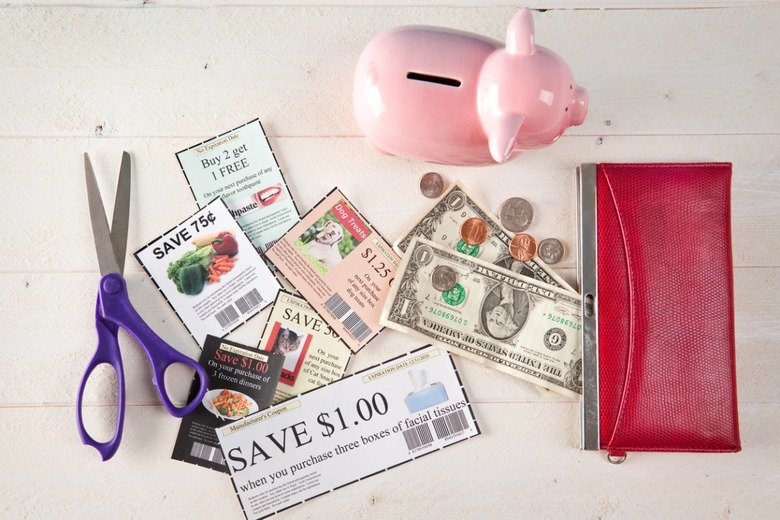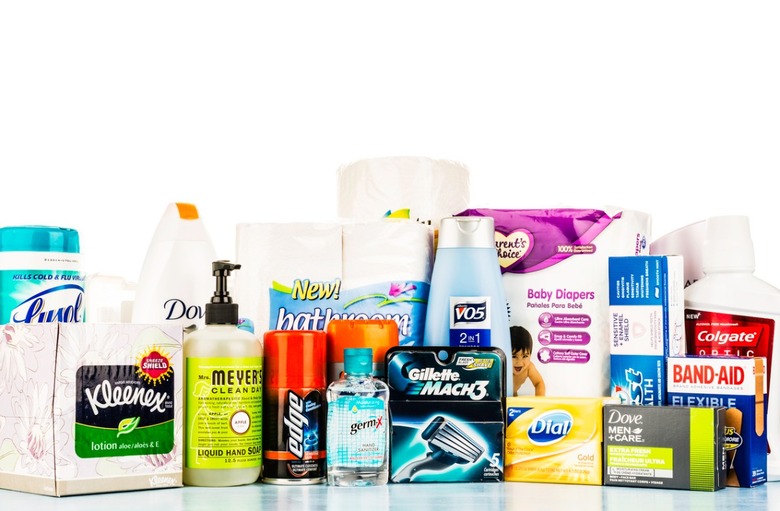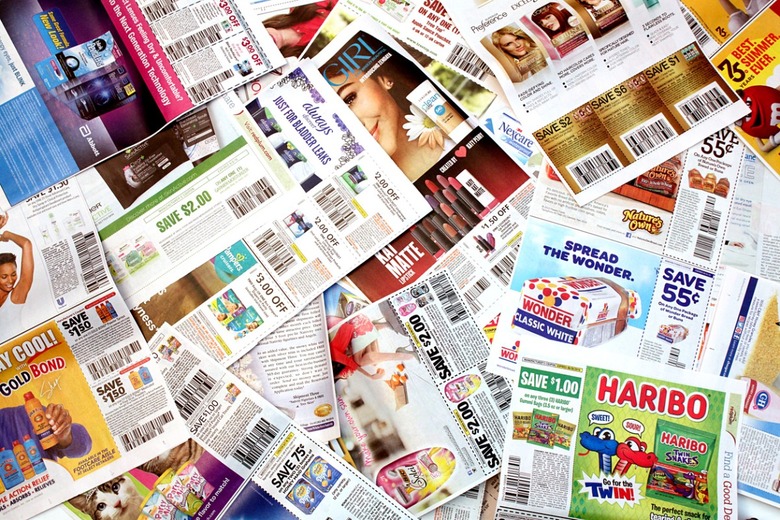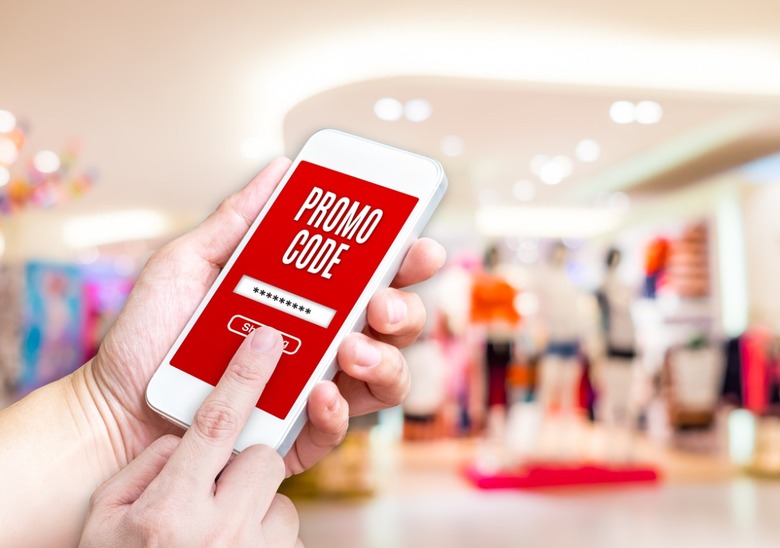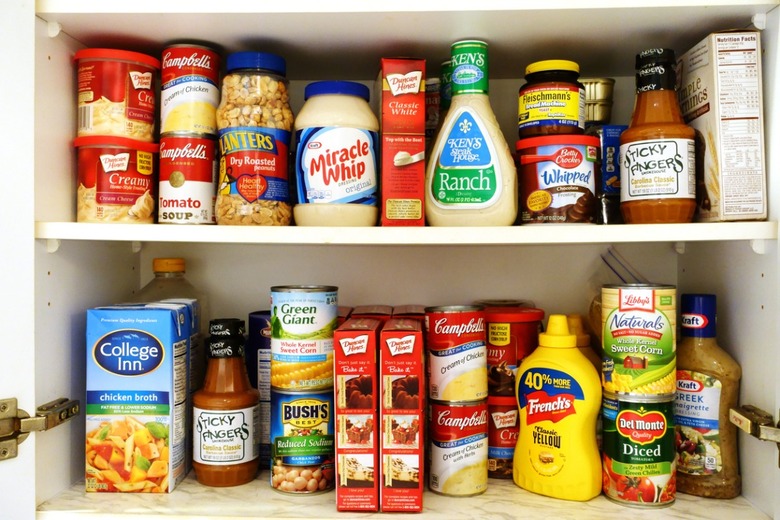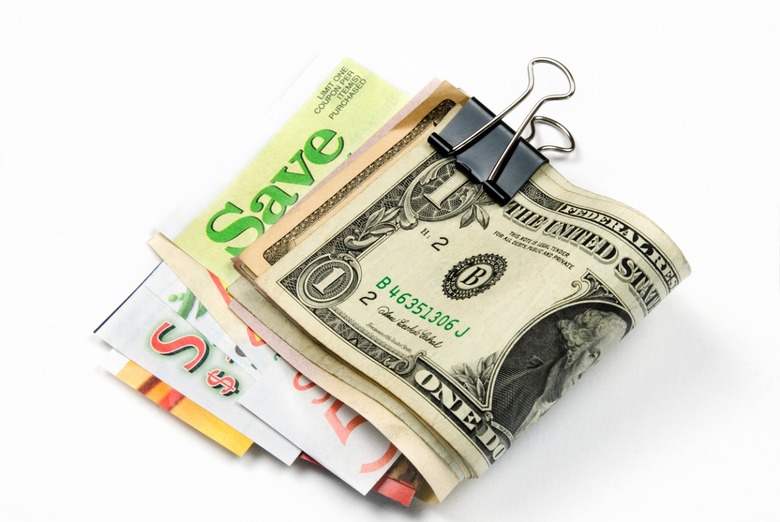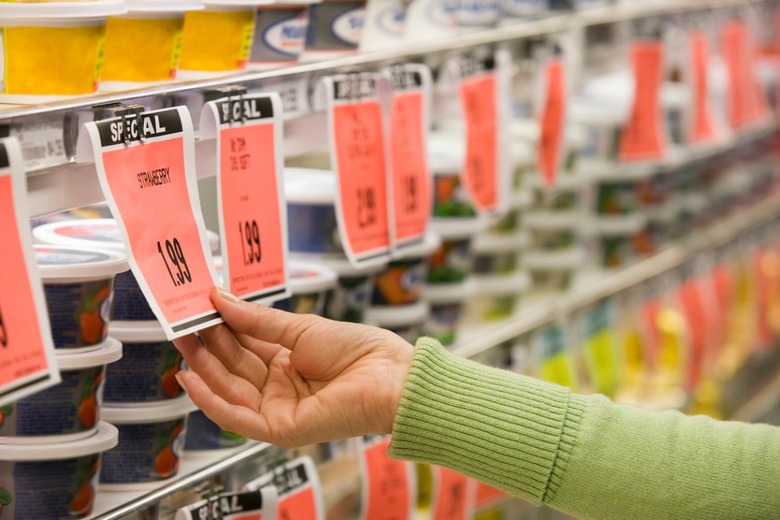Couponer's Secrets That Will Save You Up To $100 A Week Gallery
Perhaps you know someone who's posted a picture of her couponing haul on social media — an entire table covered in pyramids of toilet paper, a dozen bottles of spaghetti sauce and shampoo, boxes of soap and snacks. And along with it all, the exclamation that all of the above was scored for less than $40.
Or something like that.
So how do these couponers do it? Is it possible to save up to $100 a week on groceries and toiletries without devoting the equivalent of a full-time job to it?
After seeing a few social media posts along these lines, we decided to investigate. We talked to two expert couponers willing to share their couponing tips and tricks. Tara Rausch of Flemington, New Jersey, is my cousin and saves a minimum of $100 per week and $5,200 per year shopping with coupons. Julie Stanfill of Omaha, Nebraska, saves between $300 and $400 per week by couponing. The most she's saved at one time is $800 in a single trip. Both Rausch and Stanfill have saved 100 percent on multiple trips.
Neither woman devotes a ton of time to their hobby. Rausch, a busy mom and grandma, spends 4 to 5 hours a week couponing, while Stanfill, a working mom of four kids, says she rarely spends more than an hour each week organizing and searching for coupons.
But both love it. Here they share some of their best advice for newbies looking to save every week.
Never Pay Full Price for Toiletries
Extreme couponers know how to score toiletries for free by combining manufacturer coupons (more on this in a bit) with store sales. For example, neither Rausch nor Stanfill ever pays a penny for toothpaste, shampoo and conditioner, deodorant, shaving cream, or feminine hygiene products.
"The trick to this is not being brand-specific," Stanfill says. "One of my favorite things to buy with coupons is laundry detergent. It's really fun to buy a $9 bottle of detergent for $2. With four children who all participate in sports and activities, I use a lot of laundry detergent."
Make a List of Your Favorite Items
Couponers know the price points for their favorite products.
"I always recommend making a list of items you buy regularly and what you spend. This way you can see the low price points and know not to purchase them when the price is too high," Stanfill says.
A general rule of thumb for deals is to aim for 50 to 70 percent off the regular price. So how to get that much off the cost of your favorite products? Read on...
3 Words: Printable Manufacturer’s Coupons
Now that you know your favorite grocery and toiletries, you can go online and seek out manufacturer's coupons on a site such as Coupons.com.
But you don't want to use them yet ...
Wait for Sales
Extreme couponers know the secret to the most savings is to combine manufacturer's coupons with store sales. They call this "coupon stacking."
Here's how it works: You have your manufacturer coupons for your favorite items printed out. Wait for these items to go on sale at your local store, then pounce. (Most stores honor manufacturer coupons, though Costco does not.)
Subscribe to a Sunday Newspaper
So how do you know when your favorite stores have sales? Easy: The Sunday newspaper coupon inserts. Stanfill and Rausch both rely on these for their couponing. Stanfill subscribes to a whopping 10 copies a week simply so she can access the coupon inserts. The savings she gets each week more than makes up for the cost of the subscription. She then donates the unused papers to her local Humane Society.
While you don't have to go to these extremes, you can save each week by using the coupons found in your local Sunday paper. Common newspaper inserts include Smart Source, P&G and Retail Me Not (formerly Red Plum).
Know Where to Find Coupons
Aside from Coupons.com and your Sunday newspaper, here are other coupon resources experts use regularly:
- Catalina coupons. You know the yard-long receipts you get at the drugstore? Those are likely Catalina coupons, and couponing experts like Rausch love them. They are offers you can use for upcoming sales and many times include $5 to $50 off upcoming purchases. You might find $40 off on a Rite Aid receipt, but don't count on the cashier to tip you off.
- Tearable coupons. These are the ones found in the store along the shelves. Couponers never ignore these, either.
- eCoupons. These are apps you load onto your smartphone for instant savings at checkout.
Get to Know Your Favorite Store
Expert couponers know everything about their favorite stores. They've downloaded the store apps and signed up for loyalty cards, they know when the stores have their monthly sales, they know the store coupon policies, and they know when the stores aren't crowded.
You don't have to go to this extreme, but if you want to save money, couponers recommend joining your store's loyalty program and buying items only when they are on sale. The store will track your year-to-date savings and mail you coupons based on previous purchases. The savings can be great. Rausch says her year-to-date savings at ShopRite once topped $10,000.
Know Your Favorite Store’s Sales Cycle
So how to know when items go on sale? Most items in a store will go on sale every 8 to 12 weeks. You can simply wait for the items to be marked down, or you can get to know your store's manager and ask them to share their secrets on how items are marked down and when. Not that outgoing? Go online to see national grocery sale cycles.
Holidays are a great time to save, as well. As Stanfill says, "The grocery deals around Thanksgiving and Christmas are always amazing."
Wait for Sales, Then Stock Up
One secret to mega-savings is to stock up on sale items. Snacks are a great example of this. They don't go bad, and once you miss a sale you'll have to wait several months.
This might not work for everyone. Expert couponers often seem to score so much loot they almost require a 3,000-square-foot home to store it all in. A tiny Brooklyn apartment would be a sorry storage space for a year's worth of Prego, Pull-ups, Popsicles and pet food, but if you have the space, it's worth stocking up long term.
Think of Coupons as Currency
That $2 off coupon? Couponers see it as two $1 bills.
Buy Generic Brands
Couponing is almost always about scoring a name-brand item for less, but savvy couponers know you can save a ton of money buying a store brand, which many times contains the exact same ingredients as a name brand. For example, Walmart's generic spices are made by McCormick, and Costco's Kirkland batteries are the same as Duracell. Store brand medicines contain the exact same active and inactive ingredients as name brands but for a fraction of the price.
Don’t Forget Rebate Websites and Earning Apps
Here's a secret couponers know and the rest of us don't: There are rebate websites and apps that allow you to get money back on items already purchased. Rausch, for example, has saved $800 in only two years of using rebates. She recommends Ibotta, Saving Star, and Checkout51.
Earning apps including Receipt Pal, Receipt Hog, and Ebates allow you to take pictures of your receipts in exchange for money back via gift cards.
Plan Your Meals Around That Week’s Deals
An easy way to save money on your weekly grocery bill is to plan meals around the deals of the week at your preferred grocery stores. Pick up a flyer, peruse the deals, write up a list of meals, and then make your shopping list.
Never Ignore General Store Coupons
We're talking about the coupons that offer $5 off a $20 purchase. If you spend $100 or more each week at the grocery store, so you might as well save $5 while you're at it.
The best bet? Some stores (including Target) have apps with these general store coupons. You can save, for example, $5 on a $20 purchase of pet food simply by scanning a barcode on your smartphone at checkout.
Spend Some Time Perusing Online Sites
Become a couponing expert by visiting great couponing sites. Both Rausch and Stanfill learned their trade from friends or online. They recommend:
Know the Meaning Behind “Limit 1 Coupon per Purchase”
For the average Joe or Jane (like me), the warning label on a coupon to "limit one coupon per purchase" means you can't buy more than one of the items and get the deal on them. Nope! "Purchase" means "item" here. You can use one manufacturer coupon for each item to maximize your savings, and expert couponers tend to get multiple copies of a coupon. That way, if ice cream goes on sale, they can buy several pints.
Couponers Know to Shop Off-Peak Hours
Couponers typically spend longer than average in the checkout aisle. And they all seem to agree that the money saved trumps any angry looks from customers behind them in line or sighs from cashiers. To avoid this, they know to shop off-peak hours when they can take more time checking out without bothering anyone.
"When I am checking out and customers come behind me in line, I always tell them I have coupons and may take a few moments longer," says Stanfill. "This avoids them being frustrated. I have received many thank-yous from people." Want more ways to save big? Stop buying these 20 grocery items, and make them instead.
More From The Daily Meal:
The Best Grocery Store in Every State
10 Things You Didn't Know About 'Pioneer Woman' Ree Drummond
20 Grocery Store Items You Should Never Pay Full Price For
These Are the Ultimate Trader Joe's Dinner Hacks
10 Groceries You Should Always Buy at Walmart
